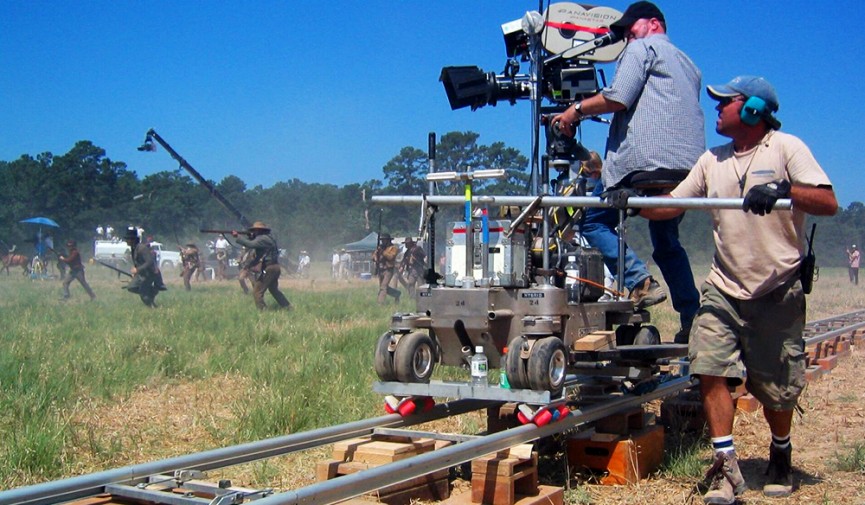This camera is rigged to move, but that doesn't mean the shot is necessarily more or less interesting than a static camera.
Every high school freshman student of English gets this message in bold colors during the first semester: use an active voice, always. It’s a vital thing to learn and deeply integrate. How does this translate to film, or theater, or other types of collaborative, creative work? How does this translate into new strategies for supply chain management?
It would be easy to mistake Hollywood director Michael Bay’s hyper caffeinated camera as an example of an active voice in cinema. Frenetic activity is not the same thing as intentionality, and an active camera is not the same thing as an active voice, artistically speaking. Where the latest Transformers movie may pretend to be intentional, with computer generated robots destroying entire city blocks—there's nothing left to chance from a production point of view – – Bay’s busy screen is not necessarily the same thing as an intentional screen. An intentional screen is often an active screen, but Transformers is simply loud.
Woody Allen stages an active frame with his cameras, although it's rare that he moves the camera around very much. From a classical point of view, his camera set-ups are sometimes a little flabby, often leaning heavily on large master shots of people talking in a room rather than carefully composing intricate tableaux. But in a greater sense what he achieves with his often locked frame has to do with an intentionality surrounding his overall experience. His camera is active because the events taking place in the frame are fully intentional. He rarely places his camera without being clear where he wants you to pay attention. In fact, the activity of his camera is really an inside-out trompe l’oeil: he brings his scenes to life which, in turn, brings us to life.
This is often the difference between compelling theater and theatrical artifice. Complex stage plays with mechanized sets and computer controlled lighting often fail to compare to a smart performance of a play down stage with confidence on a minimal set. The active voice at work here is the clear intentionality of the scene. Audiences lean forward in their seats. They get the humanity; they get the theme. Even if the story is complex and convoluted, the experience shines through because the creators are clear.
No doubt there are times when all sorts of wizardry or wordplay have something to contribute, when they matter. Steven Spielberg’s masterful Saving Private Ryan is a showcase of humanity writ large and small, with subtle gestures, broad strokes, athletic camera work placed against surprisingly intimate, quite moments. Separating the admittedly moving substance of the movie from the craft of movie making, this big Hollywood movie proves that there’s plenty of room for bold, complex choices when there’s a good, honest reason.
Be advised: a passive voice is not necessarily a quiet voice. A passive voice often tries to pretend, or worse, doesn't even know what it's trying to say. A passive voice asks you to do the formative work as a viewer without giving you the respect of understanding the goals or the syntax. Passive voices talk without saying much, remain mute when they need to take leadership of a situation, and ape ideas they’ve seen elsewhere without really understanding the genesis of what came before. Generally speaking, passive voice is one that projects detachment and disinterest, or, more malignantly, disrespect.
You’re wondering: what does supply chain management have to do with this? (It’s mentioned in the first paragraph.) Active versus passive voice applies to all sorts of problem solving situations; it doesn’t just apply to the arts. How a logistics professional figures out solutions for just-in-time-delivery at a manufacturing facility is as much about being clear with goals and resources as he or she is about respecting co-workers and employees. Sometimes the best way to tackle a big problem is to steady the ship, optimize existing systems, and seek clarity: that’s a well positioned still camera. Sometimes the right answer is to invent complex new technologies and procedures, to move hundreds of people from their normal routines, and upend tradition: a moving camera. Both solutions present options for an active voice. But when we wait for the world to resolve itself, or someone else to figure it out for us, or we simply don’t care the reasons why things happen, we’ve capitulated to a passive voice.
Then time simply passes. Then it’s gone.

